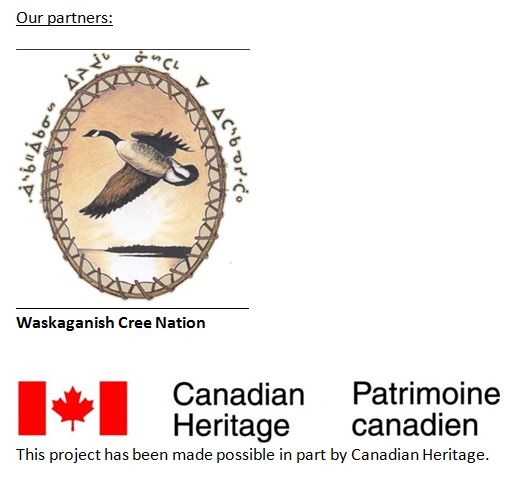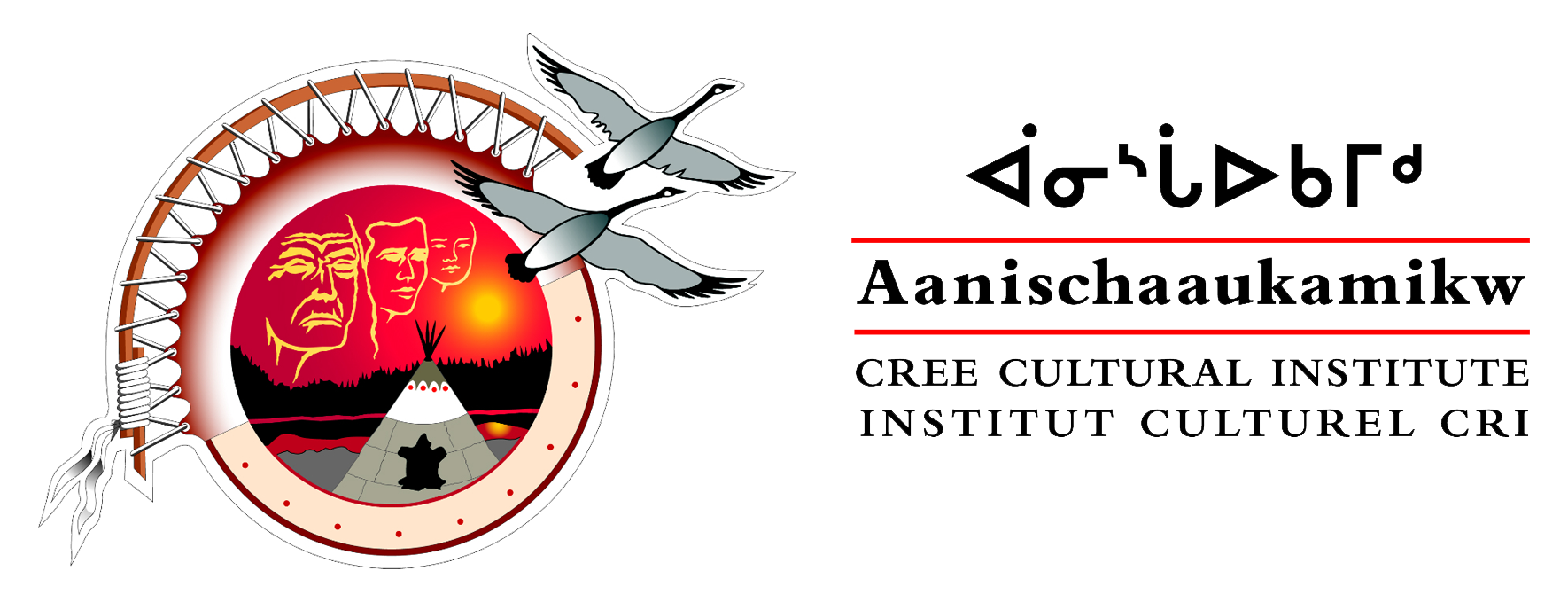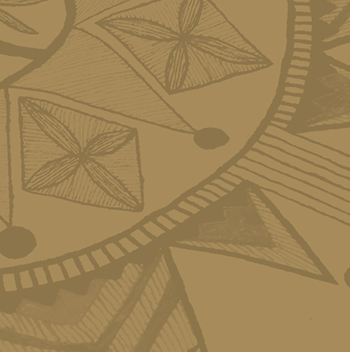ACCI Collections Staff on the Road!
Written
by Sharon Vance – Registrar
On July 1st2015, intrepid collections team members
Laura Phillips and Sharon Vance set out for the Cree community of Waskaganish
armed with Sharpies and Olfa knives.
The Mission:
As part of a larger collaboration and training partnership
with the Waskaganish Cultural Department, which is in the first stages of
constructing their own community based cultural centre, ACCI offered to help
with some temporary storage for the Waskaganish object and archival holdings
until their new building is complete. We can also help with storage advice and collections
related training, if required.
Because we were transporting objects back to Ouje-Bougoumou,
driving to Waskaganish was the only option. We chose to drive via Matagami on
the James Bay Highway.

At times the road was hard-going, but after long hours and
very bumpy mileage we finally arrived, and were greeted by Stacy Bear, Cultural
Coordinator for the Waskaganish Cultural Department.

The current storage shed!
Currently being used as temporary storage, the shed was
packed full of cardboard boxes, plastic crates and larger objects which had
been moved from their initial storage location in the basement of the Band
Office after the offices of the Waskaganish Cultural Institute were moved . Quick thinking staff moved the boxes to the
shed at the Waskaganish band utility area after damp conditions and mould had
been detected, but unfortunately the shed posed its own problems. To prevent the boxes from being damaged from
water, staff had secured the boxes with plastic wrap to create a waterproof
barrier. While this is not a highly recommended tactic because the plastic wrap
can cause different problems, it was ok as a temporary fix until we could move
them.
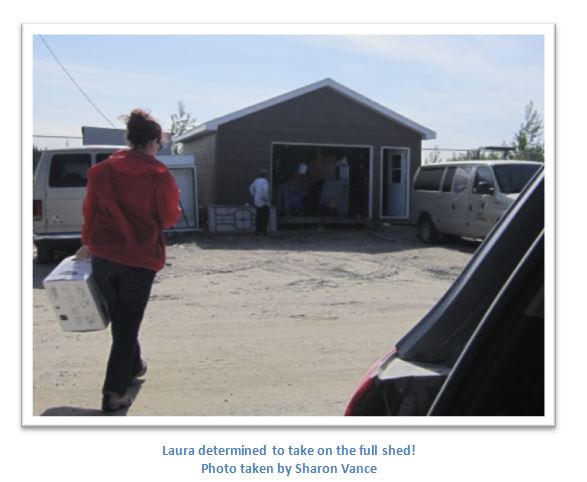
After talking to the cultural staff and conducting an
initial survey, we decided it was best to sort the boxes into three categories
and label them accordingly. We were able
to identify:
·
Archaeological objects from various digs in the
region
·
Objects taken from the John Blackned House
·
Archival documents
Sorting the boxes into these three categories made it easier
for us to organize the contents. It also helped us speed up our processing
time. We were mostly concerned with identifying
potentially fragile contents, so by sorting the boxes we knew which object
boxes to focus on.
Our sorting would also come in handy when it was time to
load our vehicles! We wanted to take the most fragile objects back in Laura’s
car, and the rest were going in the back of a covered pickup truck.
Accompanied by two amazing helpers, Bertie and Mary Small,
who had also been part of the original packing of the boxes and even worked on
the excavations where some of the finds were from, we set up two processing
stations: archival/books and 3D objects.
The archival/books station was
relatively straight forward. Since the boxes were externally labeled with terms
like ‘books’, ‘photos’, ’files’, we were able to assign them a box number and
recorded these unopened boxes in a basic box list style of inventory before
stacking them on pallets until our second vehicle arrived for packing.
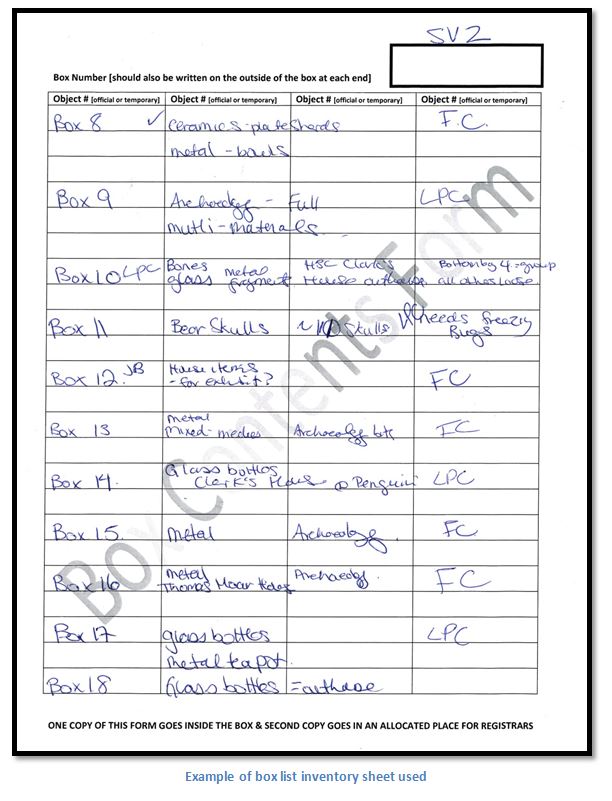
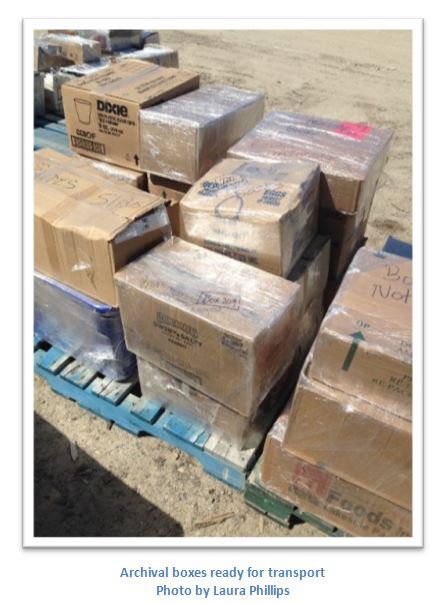
Unfortunately the boxes containing the 3D objects were not labeled
as clearly as the archives and books, so most of these were opened so we could
record the general nature of the contents. Bertie brought out what seemed like an endless
stream of boxes to my table, we stripped them of the plastic wrap and tape and
then had a quick look inside. I took
photos of the box contents. The contents were summarized on the inventory form
along with any special conditions we noticed, like the presence of insect
casings! Then we sealed, numbered and
labeled each box. Some were labeled
FRAGILE while those belonging to the John Blackned House were given a special
designation JBH.
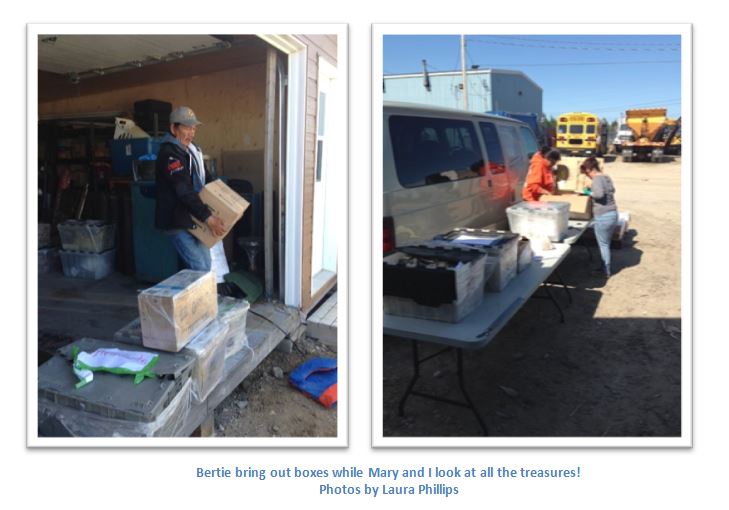
Some boxes, such as a box of decorated bear
skulls, were extremely fragile. We
decided to carefully wrap and re-pack each skull for the bumpy journey back to
ACCI.
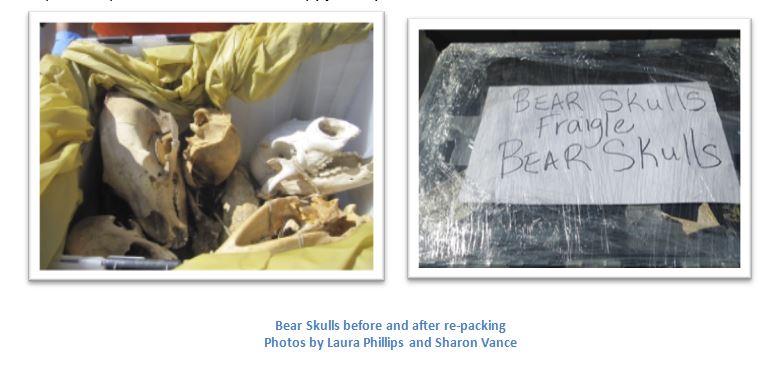
By the
end of the day we catalogued and moved 97 boxes, as well as loose items such as
maps, radios, and an antique pump organ.
It was time for us to take a break while we waited for our second
vehicle to arrive.

With some extra help from Cree Nation Government archaeologists
David Denton and Francis Marcoux, we loaded as many boxes as possible into our two
vehicles for the journey back to ACCI. We
made note of which box went into which vehicle, so we could give Stacy a
receipt for what we had taken and so we had a list to cross check upon entry
back at ACCI. We were feeling pretty good about the (now) almost empty shed,
even if we had to leave a few things behind for a return visit. ]
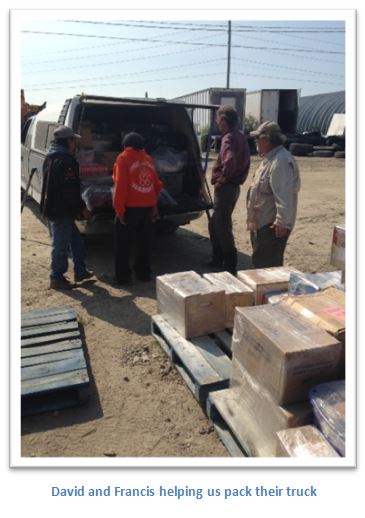

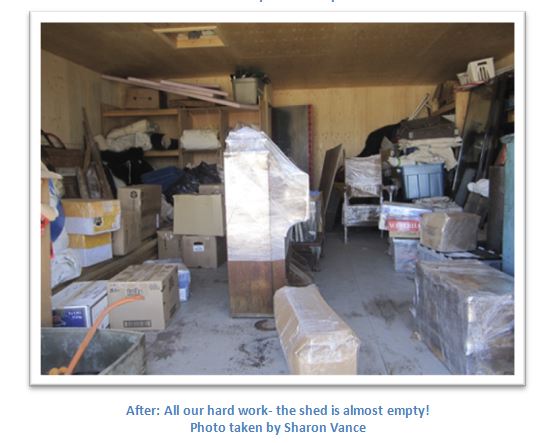
After saying goodbye to Stacy and our wonderful helpers, we
said goodbye to Waskaganish and hit the bumpy road once more for Ouje-Bougoumou
and ACCI.
so stay tuned for their ongoing adventure at our facility in Ouje-Bougoumou! Right now they are in quarantine; most of the
boxes are being frozen as a precaution because of the presence of bugs.
Stacy and her team will be joining us at ACCI in the coming
months where we will collaborate to help them fully inventory, clean and
re-house all of their objects for their trip home to the new Waskaganish
Cultural facility. This collection will have catalogue records added to the
Waskaganish community collections pages on the new Eeyou Istchee Community
Collections online database, a project funded by Heritage Canada. This website
and database resource will be available to the public by the end of 2015!!
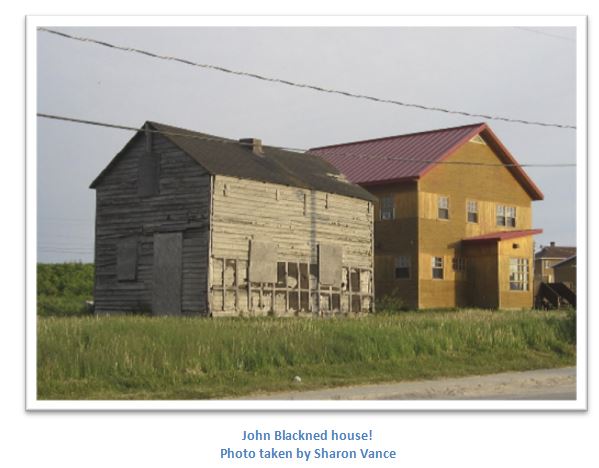
For the registrars and collections managers, this is a
list of the equipment we brought:
·
Bubble wrap
·
Plastic sheeting
·
Packing tape
·
Sharpies and pens
·
Olfa knives
·
Pre-printed inventory sheets
·
Oversized ziplock bags
·
Face masks
·
Nitrile gloves (various sizes)
·
Camera (personal)
This is what we wish we had of also brought:
·
Double the amount of everything we brought
·
ziplock bags of all sizes
·
empty bankers boxes & lids
·
Clipboards (it was windy!)
·
Collections camera
·
Sunscreen! (it was sunny!)
·
Garden/ work gloves (the pallets were
splintery!)
·
Bottles of water
·
Packed lunch
Things
that we used that were already in Waskaganish:
·
Collapsible tables
·
Wooden pallets
·
People!
